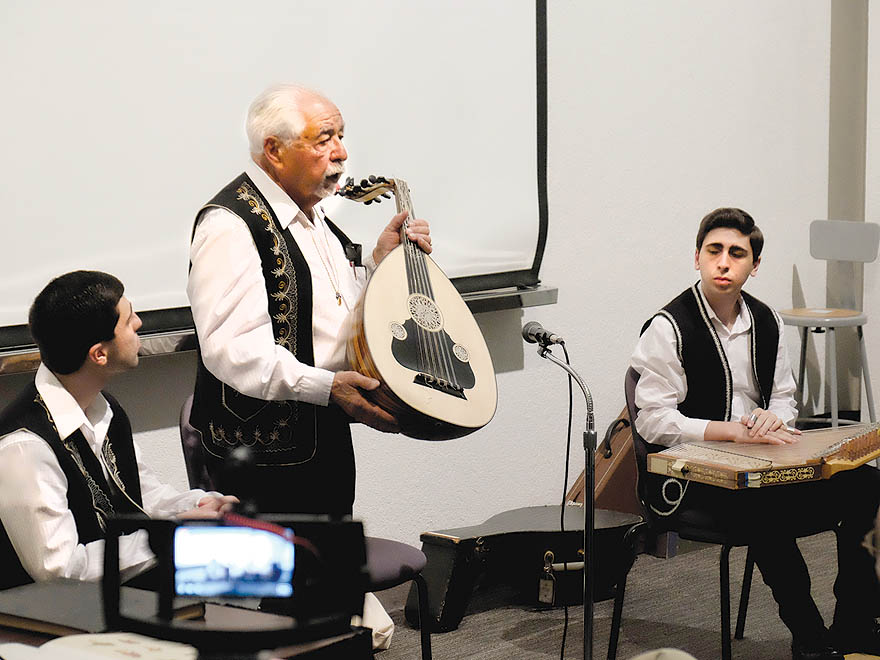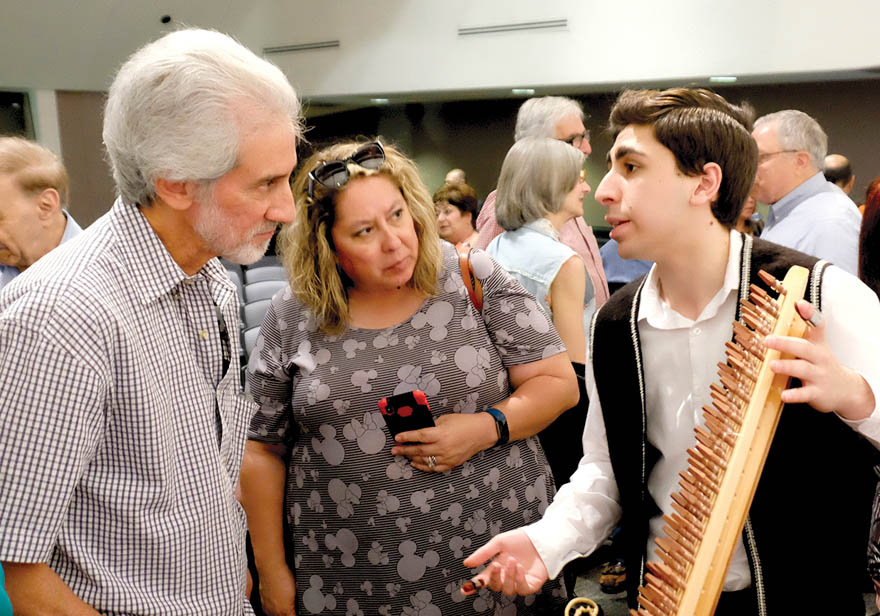
Andrew Hagopian
Staff Writer
National Endowment for the Arts (NEA) artist Richard Hagopian gave a performance and lecture, April 26, 2018, titled “Armenian Song Repertoire of the Middle East.” Accompanying him were his grandsons, Phillip and Andrew Hagopian, who were showcased on the Kanun (the Middle Eastern Lap Harp) and the Dumbeg (goblet shaped hand drum). Together, the Hagopian trio took the audience on a journey through the vast span of Armenian music history.
Hagopian’s presentation was co-sponsored by the Middle East Studies Lecture, Performance, and Film Series, the Armenian Studies Program, and the Global Music Lecture Series at Fresno State.
Armenians can trace their oldest form of music, which is liturgical music of the Armenian Apostolic Church, to the fourth century. Richard Hagopian further explained that the church music is founded upon 8 melodic modes from which all other Armenian music evolved. The Armenian Church music library is the largest in world, containing over twenty-two hundred sharagans (hymns). Armenian, as well as Greek musicians, used these eight modes through the 19th century, which is the basis of modern Armenian music.
Hagopian asserted that the instruments that he demonstrated during the lecture were used by Armenians for many years. He cited evidence from 13th-15th century Armenian manuscripts, which clearly depict the use of these instruments in marginal illustrations. Even though these instruments may have been borrowed, they have been dominant in Armenian music for generations.

The Kanun is a 75-stringed instrument played by plucking the strings using picks supported by rings on both index fingers. The Kanun looks similar to the inside of a piano. The Kanun uses sets of three strings, each the same note, to produce the same tone. Using the Kanun, Andrew Hagopian demonstrated the many quarter tones used in Armenian music, illustrating his point by transitioning from a B natural to a B-flat.
The oud, a non-fretted instrument, is an 11-stringed instrument tuned in unison, four notes in fourths and two notes in octaves. It is an acoustical instrument made completely of wood and it was originally strung with catgut string or gut strings. Within the last century there have been numerous modifications to the instrument.
Hagopian began his musical journey, by playing a short segment of Der Voghormia (Lord Have Mercy), typically sung or chanted in the Armenian Church, as an example of early Armenian liturgical music. The Hagopian trio then performed a number of songs from the regions of Kharpert, Erzerum, Dikranagerd, and finally Sepastia.
One of the most popular Armenian dances, the Halay, which has Kurdish influence, was performed by the trio. They then performed the Kochari which is the eastern version of the Halay.
The Richard Hagopian Ensemble provided an interesting presentation about the different modes and the history of the Armenian music and instruments.
 Hye Sharzhoom Armenian Action
Hye Sharzhoom Armenian Action